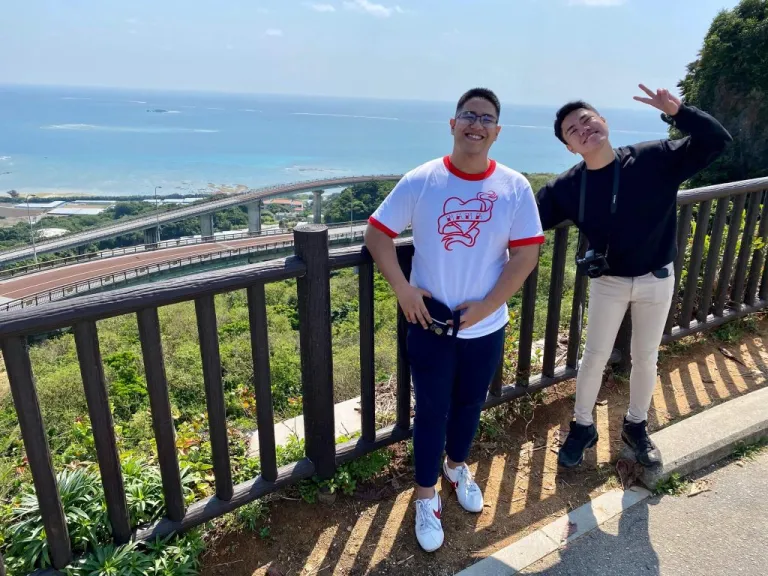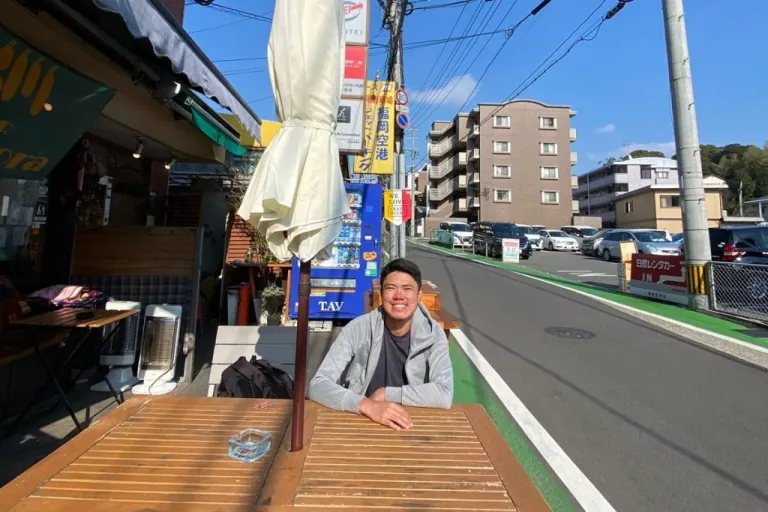Our favourite places to stay on this sleepy Cebu island.
Third Time’s the Charm: Things I Learned from My First Approved Visa Application

In 2015, three months after my first international trip to Hong Kong, I took the leap and applied for a visa for the first time. My friend Yanna and I had booked round-trip tickets to Busan, South Korea, earlier that year. As the trip neared, we submitted our South Korea visa application documents to the embassy in Taguig separately.
A week later, Yanna came back with her passport stamped with a South Korea tourist visa. Mine, however, had a different piece of paper slipped inside. It contained a list of reasons for a visa denial, and one was ticked: “You failed to prove strong economic and family ties to the home country.” In other words, my application was denied.
Nearly three years later, in February 2018, I applied for the same visa again. This time, I hadn’t booked anything in advance, telling myself, “I’ll book everything after I get the visa.” Again, I was denied. The new rejection slip pointed out a different reason from last time: “You failed to qualify for the visa category that you have applied for.”
Also read: Inspiring Visa Denial-Turned-Approval Stories of Filipino Travellers
Getting my first tourist visa

Finally, five years and two tries after that first application, I applied again, but this time for a Japan visa. This was after I got chosen to lead a campaign for the Okinawa Convention & Visitors Bureau (OCVB). I had to travel to Japan with a colleague to write stories about Okinawa.
With less than two weeks to prepare, we contacted travel agencies around Metro Manila for suggestions as to which visa we should apply for. All of them said to get one for tourism. Going for a conference or business visa requires documents that would take more time to obtain. It wasn’t like we were really going there to “work” after all. Although at the back of my mind, I was horrified because we had to arrange the documents on our own.
I didn’t know if it was because of the urgency and pressure to not disappoint the team, or the fact that I’d been writing about several visa articles in the past, but I felt more confident and knowledgeable about what I needed to do in order to make it work this time. Also, the fact that South Korea and Japan have two different application procedures factored into it, too.
So, on 28 Feb 2020, just a day after submitting our application to Universal Holidays Inc. (UHI), I got my first “real” visa. I say this because I once had a Nepal visa-on-arrival, which only required payment. My colleague Danielle, who was with me during the releasing of our passports the following week, bore witness to how overjoyed I was after seeing a sticker on my then-newly renewed passport. For a Filipino who’s used to visiting visa-free places, this was a really big deal.
Visa application tips for Filipinos based on my experience
As a tribute to the people behind that experience, I decided to pass on a few things I learned from my first successful visa application. To future Filipino visa applicants, first-time or not, I hope you find the following takeaways useful.
Don’t stop researching and interviewing until you get a clear answer

My naive self thought that once I saw one blog on how to successfully get a visa for Filipinos, I would be good to go. After all, too much information can only make things more complicated and confusing. In my case, I went beyond reading travel guides. So for the first of my visa application tips for Filipinos, I say don’t stop researching until you see a consensus in details.
For that, I joined online communities specifically catering to Japan travel (e.g. Japan for Dummies PH). Once there, I searched for specific keywords to make sure I only saw relevant and recently updated answers. I used phrases like “tourist visa 2020”, “best travel agency to apply”, and “show money for first-time applicants”.
I also went ahead and interviewed friends and random people who I thought faced the same dilemmas I had (e.g. not enough application time, individual application for group travel, not enough show money), so I could filter out information from people who had a completely different travel background from mine.
By customising the questions I asked and choosing the right people to ask them, rather than relying on full-on travel guides, I got the help I needed.
Also read: Easiest to Hardest Visa Applications According to Filipino Travellers
It’s okay to apply via a travel agency

This applies to Japan visa application for Filipinos at least, where the only option really is applying via a travel agency. Still, the benefits of using one for any visa application that allows it is tremendous.
For one, you’re dealing with people who have months or years of organising visa applications for Filipinos. Their insights are far more powerful than you’d think. For our trip, we made sure to apply with an agency that had consistently positive reviews and high approval rates.
This turned out to be UHI. Considering we applied during the pandemic wherein the Japanese government introduced additional visa requirements, the staff were patient enough to answer our questions and put us at ease. They regularly updated us via email and SMS about the progress of our application, too. Reviews say that other agencies don’t seem to do this as frequently, if not at all.
The point is that through the right travel agency — meaning one that will truly assist you in your application rather than merely accepting it — your chances of approval will be significantly higher. Not to mention, by putting your fate in the hands of experienced people, you’ll feel a lot less anxious. If this means anything to you, then paying a few extra fees is totally worth it.
What I also appreciate about our chosen agency is that they’re open to any additional document you feel like submitting. Since I lacked an Income Tax Return (ITR) to prove my financial capacity, they gladly accepted my alternatives. They were copies of my credit card statements from BDO and my insurance policy from SunLife. I’ve read other agencies tend to be stricter by removing these kinds of “unnecessary” papers.
Also read: Visa-Required Countries With Surprisingly Easy Visa Application for Filipinos
Be specific and meticulous about your details

Another thing that stuck out to me was how my application would have fared differently had I not been more cautious of details that mattered. For example, when applying for a Japan tourist visa, one has the option to have his or her bank indicate the average daily balance (ADB) of your account. An application with show money of ₱100,000 and an ADB of only ₱2,000 will raise a lot of questions. But the same account with an ADB of around ₱50,000 to ₱70,000 will appear more authentic.
If you’re not confident about this, ask your bank to remove the ADB from your bank certificate. When I applied in February this year, my show money was not enough to even cover five days in Okinawa, which is one of the more expensive parts of Japan. For this, my family and friends deposited large sums of money into my account, which really helped. With other applications, this would be a no-no.
My colleagues and I also separately wrote a convincing letter of explanation for lacking an ITR at the time. To do this, I instructed everyone to highlight their most “powerful” travel or socio-economic assets. As this was my first visa application for Japan, I focused on enumerating farther or more expensive destinations I’d previously travelled to, such as Nepal, Macao, and Singapore.
Also, review your application form and documents from time to time. Make sure that all of the information written on them is consistent. This not only includes the financial aspect as mentioned above but also a few basic details. Among them are the spelling of your name and the contact information of your company, to name a few. Among visa application tips for Filipinos, I think this is one of the most important yet also highly underestimated.
Also read: 7 Underrated VISA-FREE Countries Every Pinoy Must Visit
Key takeaways from my first successful visa application

With all the above visa application tips for Filipinos considered, the main thing to take away from here is the importance of putting your all into it. As a somewhat lazy traveller myself, this proved to be a challenge — but I miraculously overcame by investing time, research, and “kapal ng mukha” in a span of a few days. Partly because I had no choice.
Looking back on my first attempts, these were the things I failed to focus on out of inattention and ignorance. I even meant to keep my 2018 visa application experience a secret. So, I didn’t get as many personal insights as I should have. Meanwhile, by proactively knowing about others’ experiences, I’m now inclined to believe that some visa applications for Filipinos aren’t a simple game of chance, as those with past visa denials would often say (myself included).
Every now and then, I pull out my passport and just stare at my Japan visa to make sure I didn’t dream it all. Any first-time visa holders (with a history of consecutive denials) would know how surreal this experience is. From one wanderer to another, I don’t guarantee that your future visa applications will be successful at first try. However, being equipped with visa application tips for Filipinos like these is a good start.
Published at
About Author
Joser Ferreras
Subscribe our Newsletter
Get our weekly tips and travel news!
Recommended Articles
10 Bantayan Island Resorts, Hotels, and Rentals for Your Tropical Escape 10 Best Mountain Cafes in the Philippines for Your Peak Coffee Experience Coffee date on the mountains, anyone?
10 Best Things to Do in Los Angeles Los Angeles is more than Hollywood stars. From hikes with killer views to beaches straight out of a rom-com, here are 10 must-do LA experiences for Filipino travellers or any wanderers in general!
10 Commandments for Responsible Travel Flexing Spread the good word!
10 Cutest Cafes in Japan That Are Totally One of a Kind From Pikachu snacks to Totoro cream puffs, here are 10 themed cafes in Japan that prove café hopping should be part of your travel itinerary.
Latest Articles
6 Filipino Foods to Eat During New Year's Eve for Better Luck and Wealth in 2026 Lucky Filipino foods you need for a prosperous Year of the Fire Horse!
FREE NYE 2026 Countdown & Firework Shows in the Philippines Don't waste ₱17k on hotel tickets! Catch SB19, Bamboo, and Ely Buendia for FREE.
New US Biometric Rule Filipino Travellers Must Know Mandatory border photo checks
Free MRT 3 Rides on Rizal Day 2025 Four hours of free rides
SM North-Trinoma Walkway Soon to Be Built, Says DOTr Safer walks ahead!

